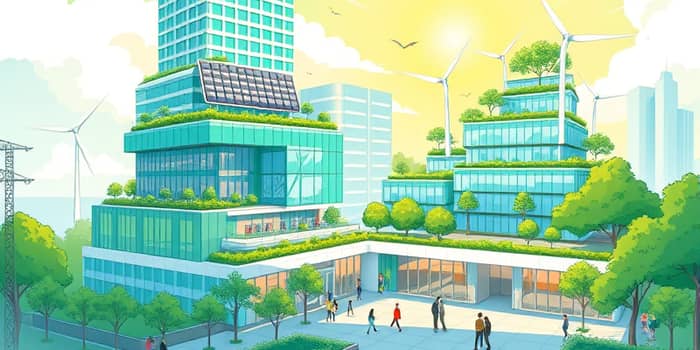
As global priorities shift toward environmental stewardship, the built environment stands at the crossroads of sustainability and profitability. Investors and developers seeking resilience and robust returns are turning to green buildings, recognizing that a healthy planet and healthy finances go hand in hand.
A sustainable space, or green building, integrates advanced strategies for energy efficiency, water conservation, and renewable materials. These structures often feature high-performance glazing, low-flow fixtures, solar arrays, and biophilic design, all aimed at reducing environmental impact.
“Future returns” in real estate encompass metrics such as ROI, asset appreciation, occupancy stability, and risk mitigation. By embedding sustainability at every design phase, projects can secure immediate and long-term benefits for owners, occupants, and communities.
Although green buildings may require 2-7% higher upfront investments versus conventional construction, they deliver compelling financial results. Over a building’s lifecycle, owners can capture up to 40% over a building’s lifetime in ROI through energy savings, increased rents, and premium valuations.
Payback periods can be as short as 3-5 years for initial investments, especially when supplemented by tax rebates, low-interest loans, and expedited permitting that can cut upfront costs by up to 30%. Insurance discounts for certified properties further bolster returns.
Rising environmental awareness among corporations and residents fuels demand for green spaces. Tenants in certified buildings often pay 7.1-29% higher rents and exhibit up to 4.1% higher occupancy rates, driven by superior air quality, abundant daylight, and smart climate controls.
Healthy, efficient workplaces also enhance employee well-being and productivity, translating to lower absenteeism and higher output. Institutional investors now embed ESG criteria in due diligence, with sustainability no longer a niche preference but a core investment imperative.
Green buildings are inherently more resilient to regulatory shifts, from carbon pricing to stricter energy codes. Properties with climate-adaptive designs and disaster-resistant features are increasingly sought after, with up to 40% of investors paying premiums for resilience.
These assets not only hedge against future liabilities but also appeal to capital allocators seeking stable cash flows in volatile markets.
The global green building market is projected to expand from $43 billion in 2020 to $81 billion by 2025, reflecting a 12% compound annual growth rate. By 2034, forecasts estimate the sector will surpass $1.37 trillion, driven by government mandates, corporate net-zero targets, and consumer preferences.
In leading regions, more than a quarter of new construction now earns certification. Top markets report that 85% of major new projects integrate sustainable features, and 68% of companies promote eco-friendly developments to capture premium segments.
The Empire State retrofit showcases how a landmark can reinvent itself, reducing emissions and operational costs while attracting top-tier tenants. The Bullitt Center, often dubbed the greenest commercial building on Earth, recouped its upfront premium in under a decade. PNC Tower’s passive design strategies cut heating and cooling expenses dramatically, enhancing asset valuations.
Early integration of sustainable strategies maximizes ROI and avoids costly retrofits. Key practices include:
Utilizing recognized certification frameworks—such as LEED, BREEAM, Energy Star, and WELL—provides benchmarks and unlocks market premiums. These labels signal to investors and tenants that a building meets stringent performance standards.
A common misconception is that sustainable construction is prohibitively expensive. Real-world data reveals that premiums typically fall within the 0-7% cost gap and pay back swiftly through operational savings. Supply chain improvements and clearer regulations have further narrowed this margin.
Education and transparent cost-benefit analyses are essential to overcome skepticism and accelerate adoption.
Technological innovation—smart grids, AI-driven energy management, advanced materials—will drive down costs and enhance performance. Stricter climate regulations and rising energy prices will propel sustainability from optional to obligatory.
Companies aligning portfolios with net-zero and ESG mandates will command investor confidence and long-term stability. As the market matures, green assets will transition from niche opportunities to mainstream cornerstones of real estate investment.
Sustainable spaces represent a fusion of responsible design and sound financial strategy. By prioritizing resource efficiency, occupant well-being, and resilience, developers and investors can secure premium valuations, steady cash flows, and reduced risks.
In an era defined by environmental urgency and economic uncertainty, green buildings stand as beacons of innovation—offering not only a healthier planet but also future returns that endure across generations.
References





